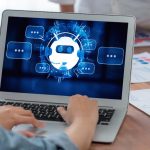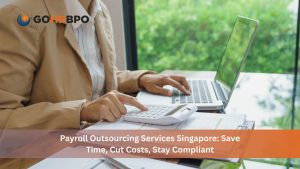HR professionals go through several complex situations day in and out. But with the increasing integration of AI within their operations, it’s not only a future consideration for HR but an essential equipment. AI was introduced and considered mere as a tool which was more like gamifying tasks, and was never more than that, until great minds developed the technology further to form ATS platforms and chatbots to aid HRs.
A recent Gartner study reveals that 62% of HR leaders have already explored or are planning to explore many of their functions with AI, and 11% have already adopted it as a part of their processes. Only 13% say they have no plans to use it. How could HRs integrate AI into their hiring process, is explained in this post.
Onboarding With AI
I have below formed a timeline for complete workflow of onboarding with AI;
Also Read: Salary Slips: A Guide for New Employees
| Timeline Phase | AI Applications | Tools/Techniques | Benefits |
| Pre-Onboarding | Automated document collection and verification | AI chatbots, OCR tools | Reduces manual work, speeds up pre-joining formalities |
| AI-based background checks | Machine learning screening tools | Faster, more accurate verification | |
| Personalized welcome emails and onboarding kits | Generative AI | Increases engagement, creates positive first impression | |
| Day 1–Week 1 | Virtual onboarding assistant for FAQs and navigation | AI chatbots (e.g., Talla, Leena AI) | Provides 24/7 support, reduces HR workload |
| Automated training module assignment based on role | AI-driven LMS (Learning Management Systems) | Personalized learning paths | |
| Sentiment analysis from initial employee feedback | NLP tools | Detects early dissatisfaction or confusion | |
| Week 2–Week 4 | Task and milestone tracking using AI reminders and nudges | AI-based task management tools | Keeps new hires on track, improves productivity |
| Adaptive training content delivery | AI-driven recommendation engines | Boosts learning effectiveness | |
| AI-powered surveys to collect experience feedback | Sentiment and emotion analysis | Identifies onboarding gaps, enables improvements | |
| Month 2–3 | AI-based performance prediction from initial tasks and training performance | Predictive analytics | Identifies high-potential hires early |
| Personalized development plans and mentorship suggestions | AI talent development tools | Encourages growth and retention | |
| Ongoing (Post 90 Days) | Continuous engagement through AI-powered check-ins and mood tracking | AI wellness and engagement platforms | Supports long-term retention |
| Data analytics on onboarding success rates | HR analytics dashboards | Helps HR optimize future onboarding strategies |
7 Key Use Cases Driving Success
Below I have mentioned 7 real-time use cases where AI is transforming the whole idea of hiring workforces;
Use Case 1: Employee Onboarding & Training
- AI Onboarding Portals: AI integrated portals help new employees with important documents, policies, and introductions.
- Interactive Training Modules: AI-powered training modules help in employees’ learning and development.
IBM’s AI onboarding assistant, “Ivy,” reduced employee onboarding time by 50% and increased retention.
Use Case 2: Forecasting for HR
- Talent Acquisition: AI algorithms analyze inputs to forecast best fits.
- Workforce Diversity Enhancement: AI helps in determining an inclusive workforce by analyzing hiring requirements and providing insights.
Hilton Hotels implemented AI-driven candidate screening, reducing recruitment time by 40%.
Use Case 3: Virtual Assistants & Chatbots
- AI-Powered Chatbots: Chatbots operate routine inquiries, provide support, and streamline many of HR tasks.
- Personalized Virtual Assistants: AI-integrated virtual assistants help scheduling meetings, arranging tasks, and provide insights.
Capital One employs chatbots for customer support, reducing response times by 30%.
Also Read: Questions Businesses Should Ask Their Payroll Partners in 2025
Use Case 4: Enhanced Data Security
- Threat Detection: AI 24×7 monitors network logs and identifies and mitigating security threats.
- Data Privacy Compliance: AI always ensures compliance with data protection obligations by analysing data access and usage.
JPMorgan Chase uses AI to detect threats, prevent data breaches, and save millions.
Use Case 5: Employee Well-being & Mental Health
- Employee Well-being: AI provides customized well-being suggestions, from exercise routines to stress management ideas.
- Employee Feedback: AI collects and analyzes employee feedback to address them for timely resolution.
Unilever introduced AI-driven well-being programs, resulting in a 20% increase in employee satisfaction.
Use Case 6: Customized Work Environments
- Adaptive Workspaces: AI as per the needs adjusts lighting, temperature, and office layout.
Siemens implemented AI-controlled workspaces, enhancing employee comfort and productivity.
Use Case 7: Content Generation
- Automated Content Creation: AI creates reports and marketing materials.
- Process Automation: Routine tasks such as data entry, email sorting, and preferable appointment scheduling.
Forbes utilizes AI to automate content creation, publishing thousands of articles daily.
Conclusion
Artificial intelligence is equipped well to leverage technologies like natural language processing, machine learning, and advanced analytics to correctly automate tasks conventionally operated by HR professionals. Ranging right from recruitment to benefits to personnel support, AI always aids HR teams to support employees, form informed decisions, and rightly manage their workloads.






